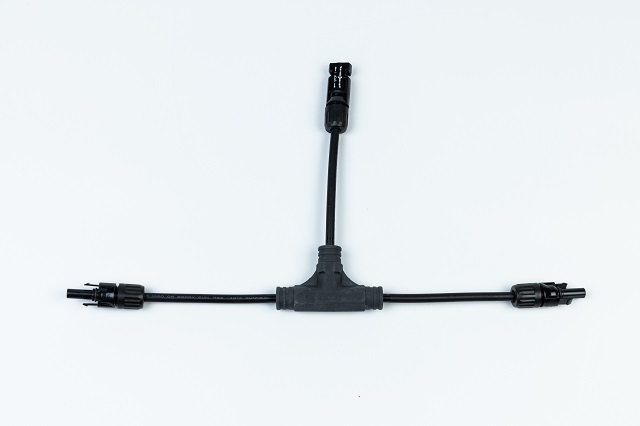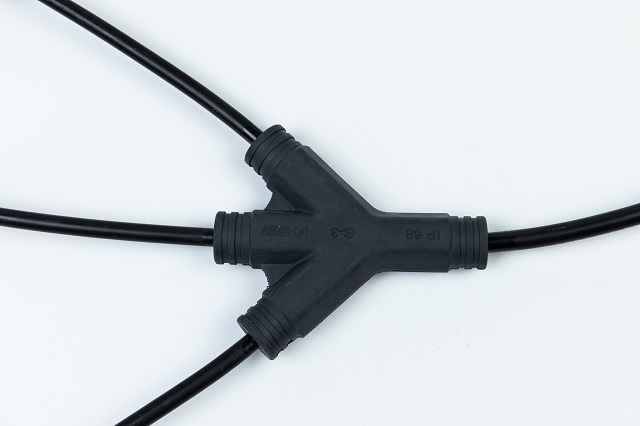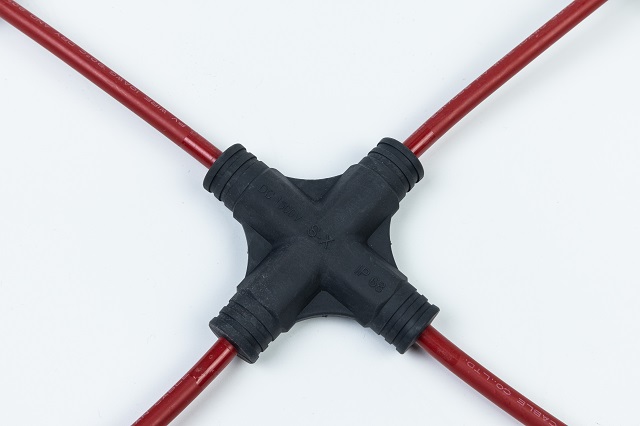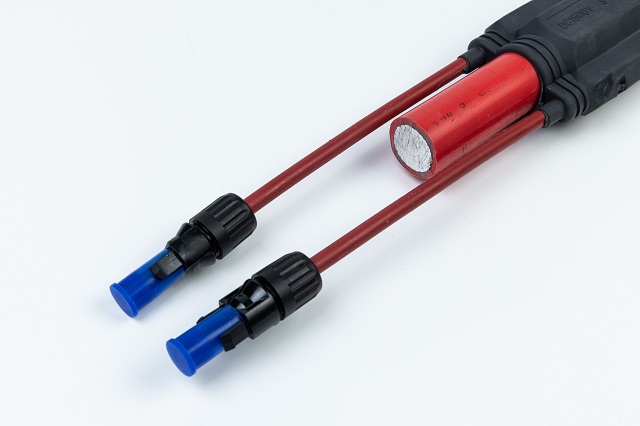I. Introduction

A. Brief explanation of what a cable harness is (also known as a wire harness, cable assembly, wiring assembly).
A cable harness, also known as a wire harness, cable assembly, or wiring assembly, is a systematic and structured arrangement of cables and wires used in electrical systems. These assemblies are designed to improve efficiency and safety by consolidating numerous wires into a single sheath, thereby reducing the space occupied and enhancing the management of the wire system.
B. Overview of its typical components and assembly.
A cable harness typically consists of several integral components, each serving a specific function within the assembly. At the core of any harness are the wires and cables, which transmit power and signals. These can range from simple copper strands for basic electrical tasks to complex multi-wire configurations designed for sophisticated electronic applications.
The protective outer covering of the harness is crucial as it shields the internal wires from environmental threats such as abrasion, moisture, and chemical vapors. This covering is usually made from materials like thermoplastic rubber, vinyl, or woven fabric, depending on the environmental conditions the harness needs to withstand.
Connectors and terminals at the ends of the wires are what make the cable harness so functional. These components allow the harness to be easily connected to different parts of an electrical system, enabling quick assembly and maintenance. Connectors are typically designed to be easy to use yet secure enough to prevent accidental disconnections.
The assembly process of a cable harness involves precise design and engineering. It begins with a detailed schematic that maps out the path of each wire and its connection points. The wires are then cut to the specified lengths, fitted with any necessary terminals or connectors, and bound together using straps, cable ties, or conduits. This process might also include the installation of protective sleeves, sheaths, or additional insulation.
Quality control is integral throughout the assembly process to ensure that each harness meets the specific requirements and standards expected for its application. Automated testing equipment is often used to check for electrical continuity, strength, and durability.
With these components and assembly steps in mind, cable harnesses are designed to meet exact specifications for maximum efficiency and reliability in their respective applications.
SUNKEAN provides one-stop solutions from cables, harnesses to connectors, which can greatly improve project assembly efficiency. Moreover, the cables and harnesses are self-developed and self-produced in our own factories, with advanced equipment and complete testing processes for reliable quality assurance.
C. Introduce the context in which cable harnesses are commonly used (automotive, aerospace, electronics, etc.).

Automotive Industry: In the automotive sector, cable harnesses are critical for managing the extensive wiring that controls everything from basic vehicle functions like power windows and mirrors to critical systems such as engine management and safety features. The confined spaces within vehicles require efficient use of space that cable harnesses provide, ensuring reliability and ease of maintenance.
Aerospace: Aerospace applications perhaps demand the highest standards for cable harnesses due to the extreme conditions and the critical nature of flight systems. Harnesses used in aircraft and spacecraft are designed to be exceptionally robust and lightweight, capable of withstanding severe vibrations, temperature fluctuations, and radiation. The precise organization and reliable connectivity are vital for both performance and safety in flight operations.
Electronics: From consumer gadgets to industrial control systems, cable harnesses help organize and protect wiring in countless electronic products and systems. They ensure that electronic devices perform reliably by preventing tangling and damage to the internal wiring, which could otherwise lead to electrical failures.
Energy Sector: In power generation and distribution, harnesses manage the large volumes of wires necessary to handle high voltages and currents safely. They play a crucial role in both traditional and renewable energy infrastructures, such as wind turbines and solar panels, where durability and resistance to environmental factors are paramount.
II. Improved Organization
A. Describe how cable harnesses bundle wires and cables together, leading to better organization within systems.
Streamlined Configuration and Accessibility: Cable harnesses streamline the configuration of complex wiring systems by consolidating multiple wires into a single, manageable assembly. This bundling not only makes the internal components of any machine look organized but also significantly enhances the functionality and accessibility for technicians. In environments where space is at a premium, such as in automotive dashboards or aircraft fuselages, the space-saving nature of cable harnesses allows for more efficient use of available room. This orderly setup also simplifies the process of troubleshooting and maintenance because each bundle can be designed to correspond to specific system components or functions, making it easier to locate and address issues.
Reduced Installation Errors: With wires neatly arranged and securely fastened within the harness, there's a reduced likelihood of installation errors, such as incorrect wiring connections, which can lead to system failures or malfunctions. Harnesses are typically pre-assembled in a controlled factory setting where they undergo rigorous testing before installation. This pre-assembly process ensures that every harness is consistent and meets exact specifications, reducing the possibility of error once the harness is installed in its final destination.
Enhanced System Performance: Organized wiring achieved through cable harnesses not only protects the wires but also promotes better airflow and cooling in electronic systems. This can be crucial in preventing overheating and ensuring optimal performance of the system. Moreover, the physical containment of wires within a harness reduces the risk of interference between wires, which is particularly important in applications where signal integrity is critical, such as in telecommunications and data centers.
B. Discuss the impact of improved organization on maintenance and serviceability.

Simplified Troubleshooting: The organization provided by cable harnesses simplifies the process of troubleshooting. When cables are neatly arranged and clearly labeled within a harness, technicians can easily identify, access, and test different components without needing to untangle a mess of wires. This clear structure reduces downtime during repairs because it decreases the time it takes to locate the source of a problem, whether it's a short circuit, a broken wire, or a faulty connection.
Streamlined Maintenance Procedures: Regular maintenance becomes less cumbersome and more efficient with organized cable harnesses. For routine checks and updates, technicians can quickly disconnect and reconnect parts of the system without disrupting other components. This modular approach not only speeds up routine maintenance but also ensures that maintenance tasks are performed more accurately, reducing the risk of human error and potential damage to sensitive equipment.
Enhanced Serviceability with Modular Design: Cable harnesses often incorporate a modular design that allows individual segments or components to be replaced without the need to overhaul the entire system. This modularity is especially beneficial in complex systems like aircraft or large industrial machines, where replacing a single malfunctioning module can drastically reduce service times and costs. Additionally, this approach enables easier upgrades to systems, as new technologies or components can be integrated with minimal disruptions.
Cost-Effectiveness Over Time: Organized systems require less time to service and maintain, translating into direct cost savings. Fewer labor hours are needed for diagnosing issues and performing repairs, and the risk of causing additional problems during maintenance is minimized. Furthermore, the prolonged lifespan of well-maintained equipment reduces the need for premature replacements, providing significant long-term financial benefits.
C. Case example of a complex machinery or vehicle where harnesses simplify the internal wiring structures.
Case Study: Electric Vehicles (EVs)
Electric vehicles (EVs), known for their sophisticated technology and need for a myriad of electrical components, serve as an excellent example of how critical wiring harnesses are. In an EV, the wiring harness must manage connections from the battery pack to the motor, onboard charger, air conditioning system, lighting, dashboard, and more.
Reduced Complexity: Without harnesses, the internal structure of vehicles would be chaotic. Harnesses organize these connections in a way that makes them easier to assemble, diagnose, and repair. For instance, in the event of a repair, a technician can isolate and replace a single section of the harness without disturbing the rest of the system’s wiring.
Enhanced Safety: Wiring harnesses are designed to compactly bundle wires, shielding them from the harsh environments typically found within the engine compartments of vehicles. This protection minimizes the risk of electrical shorts and reduces the chances of fire hazards.
Improved Performance: By ensuring that all components receive stable and uninterrupted power, harnesses play a crucial role in the overall performance and efficiency of the vehicle. This is particularly vital in EVs, where optimal electrical flow is necessary for best performance.
III. Enhanced Safety

A. Detail how cable harnesses enhance safety by securely binding wires, protecting them from abrasion, moisture, and other environmental hazards.
Securing and Binding Wires: One of the primary functions of a cable harness is to securely bind wires together, which helps in maintaining an organized and compact system. This binding is crucial because it prevents the wires from becoming loose and entangled, which can lead to accidental disconnections or malfunctions. In environments where movement and vibration are constant, such as in vehicles or industrial machines, a secure bind is essential to maintain consistent electrical connections.
Protection from Abrasion: In any system where wires are exposed to movement against other components, abrasion is a significant risk. Abrasion can gradually wear down the insulation of a wire, leading to exposed conductors and the potential for short circuits, which can cause system failures or even fires. Cable harnesses are typically encased in a protective sheath made of materials like rubber, vinyl, or cloth. These sheaths are designed to withstand wear and tear, thus shielding the wires from direct contact with other components and reducing the risk of abrasion.
Shielding from Moisture and Environmental Contaminants: Moisture is an enemy of electrical systems. Water can cause short circuits and corrosion, which degrade the performance and lifespan of electrical components. Cable harnesses help mitigate this risk by incorporating moisture-resistant materials that wrap around the wires, effectively sealing them off from any liquid ingress. Moreover, these harnesses can also protect against other environmental contaminants like dust, chemicals, and oils, which are prevalent in industrial settings and can significantly harm electrical systems.
Thermal Protection: Extreme temperatures, both high and low, can severely affect the functionality of electrical systems. Wires and cables are particularly susceptible to temperature fluctuations, which can lead to brittle wires or overheated conductors. Cable harnesses often include thermal insulation materials that help maintain a stable temperature around the wires, thereby ensuring that the electrical system operates within safe thermal limits.
Ensuring Compliance with Safety Standards: Finally, cable harnesses contribute to enhanced safety by ensuring that wiring systems comply with international safety standards and regulations. These standards are designed to ensure that electrical systems are not only effective but also safe to operate. By using harnesses, manufacturers can more easily adhere to these standards, as the harnesses are engineered to meet specific criteria for protection, durability, and fire resistance.
B. Explain the role of harnesses in reducing the risk of electrical fires and shorts.
Prevention of Electrical Shorts: Electrical shorts occur when electrical currents stray from their intended paths, often due to exposed, damaged, or improperly connected wires. These shorts can lead to sudden surges of power that may damage components or ignite flammable materials. Harnesses mitigate this risk by encasing wires in a protective sheath, which isolates wires from each other and from the external environment. This containment prevents the physical contact necessary for a short circuit to occur, ensuring that electrical currents travel only along their designated paths.
Additionally, harnesses are designed with specific routing guidelines that further reduce the risk of shorts. By avoiding sharp bends and keeping wires away from moving parts or high-temperature areas, harnesses help maintain the integrity of the wire insulation, which is crucial for preventing electrical shorts.
Reduction in Electrical Fire Hazards: Electrical fires can be sparked by several factors, including shorts, overloaded circuits, and overheating. Harnesses play a critical role in reducing these risks through careful design and material selection. For instance, the materials used in harnesses—such as flame-retardant plastics and fiberglass—are chosen for their ability to withstand high temperatures and resist burning.
Harnesses also help distribute electrical loads evenly throughout the system. By ensuring that no single wire or connector carries too much current, harnesses prevent the overheating that can lead to fires. This distribution is particularly important in complex systems where power demands vary widely between components.
Enhanced System Reliability and Monitoring: The structured organization of wires within a harness not only facilitates easier maintenance and diagnostics but also allows for better monitoring of electrical system health. Many modern harness systems include integrated sensors that monitor current flow, voltage levels, and temperature. These sensors can alert operators to potential issues before they result in shorts or fires, providing an opportunity to address problems proactively.
Compliance with Safety Standards: Cable harnesses are designed to meet stringent safety standards and regulations, which dictate everything from wire thickness and insulation type to connector quality and fire resistance. Compliance with these standards is critical not only for operational safety but also for legal and insurance purposes. Harness manufacturers often undergo rigorous testing and certification processes to ensure their products can effectively mitigate risks associated with electrical fires and shorts.
C. Mention certifications and standards that ensure the safety quality of cable harnesses.
UL (Underwriters Laboratories) Certification: UL is one of the most recognized certifications for product safety in the global market. A UL certification ensures that the cable harness has been tested to withstand the typical stresses and hazards it may encounter in its operational environment, including electrical, fire, and mechanical risks.
ISO (International Organization for Standardization):
ISO 9001: This standard relates to quality management systems and is critical for ensuring the consistency and quality of products, including cable harnesses. Compliance with ISO 9001 helps ensure that manufacturers meet both customer and regulatory requirements consistently.
ISO/TS 16949: Specific to the automotive industry, this standard pertains to the design, development, production, and, when relevant, installation and servicing of automotive-related products, including cable harnesses.
IPC/WHMA-A-620: This standard, developed by the IPC (Association Connecting Electronics Industries) and the WHMA (Wire Harness Manufacturer’s Association), is the only industry consensus standard for cable and wire harness fabrication and installation. It sets expectations for cable and wire harness assemblies, including criteria for materials, methods, tests, and acceptability.
SAE Standards: The Society of Automotive Engineers sets specific standards for the automotive industry, which include guidelines for the performance, design, and manufacture of cable harnesses in vehicles. These standards ensure that the harnesses can handle the environmental challenges and durability demands typical in automotive applications.
MIL-Spec (Military Specifications): For military applications, cable harnesses must meet specific requirements, known as MIL-Spec, which ensure they can perform in extreme conditions. These specifications cover everything from the types of materials used to how cable harnesses should be constructed to withstand environmental stresses like moisture, temperature extremes, and mechanical wear.
IV. Conclusion
If you are interested in high-quality harnesses, and comprehensive after-sales service, welcome to visit SUNKEAN, where there are all kinds of latest cable products you need. If you have any needs, you can leave a message to our salesman, thank you for your coordination. Email: sales@sunkean.com